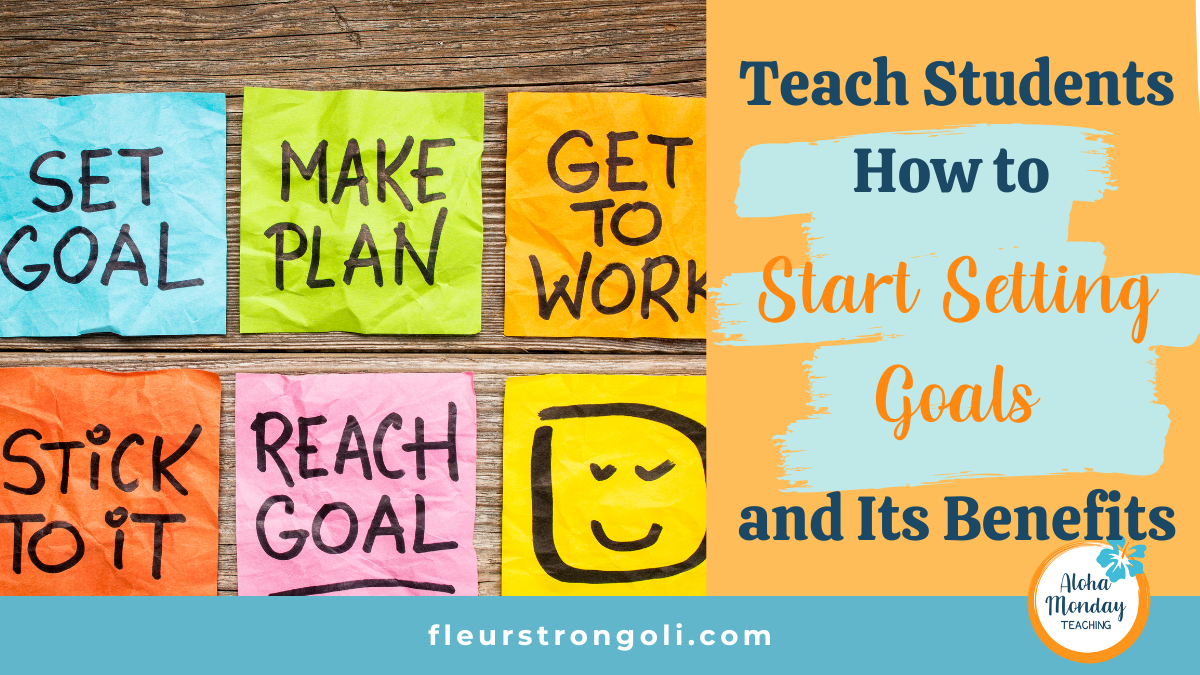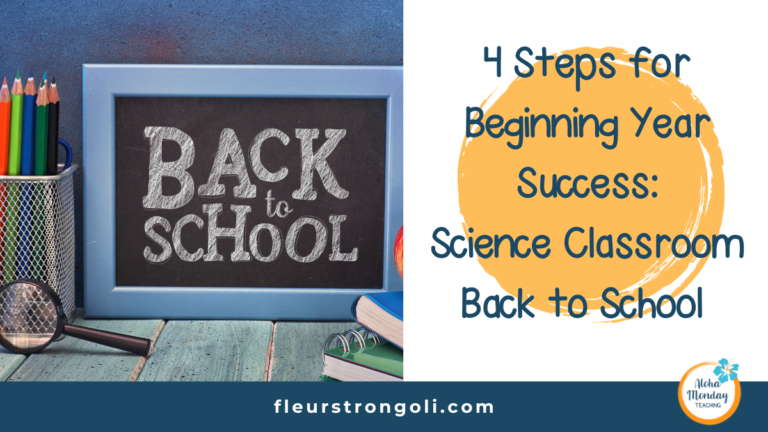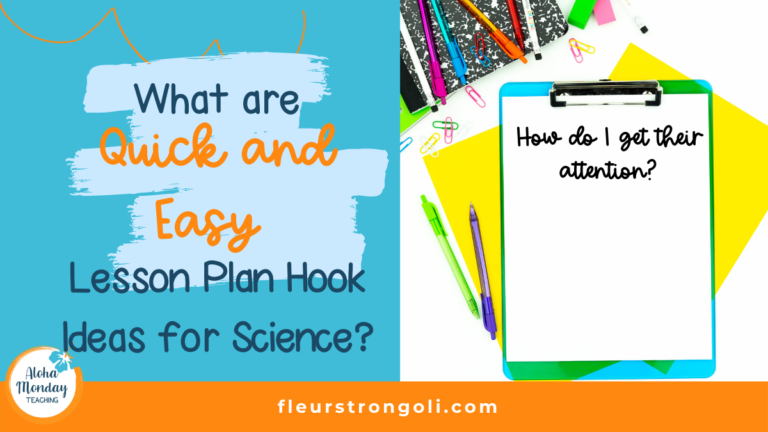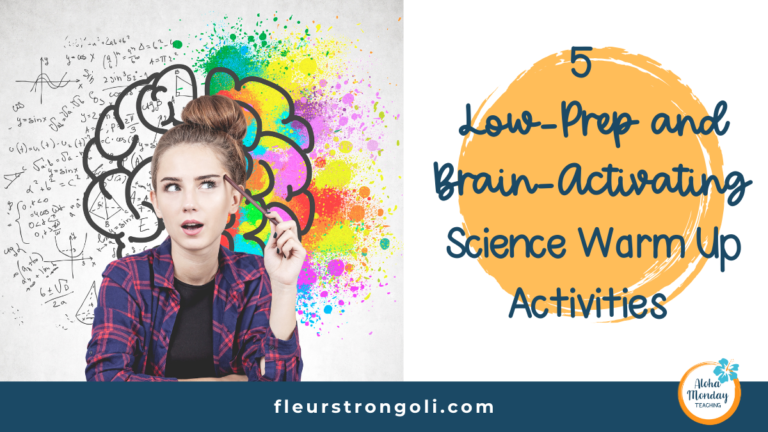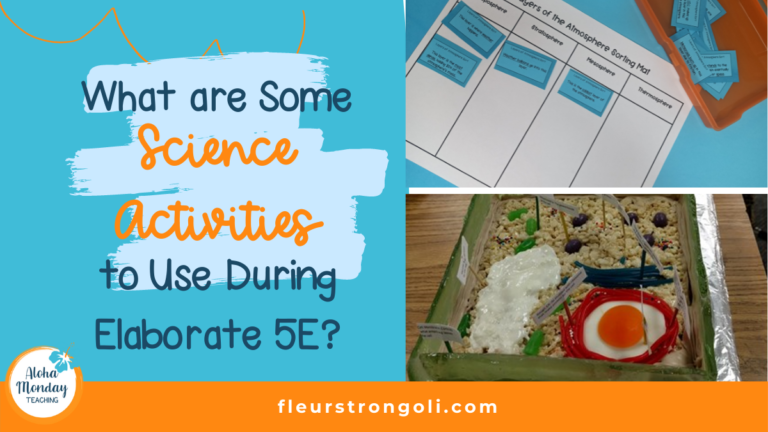Teach Students How to Start Setting Goals and its Benefits
I love setting goals and reaching them, and I like to teach my students how to start setting goals. I involve them in my goal setting and share my progress with them. This helps them see how they can do this too.
Let’s get started!
In this post
We will talk about goal setting in Science class with your students. I will share some benefits about goal setting and how our brains are affected. Then I will give two examples of goals you can set with your students and an easy way to monitor their progress.
Disclosure: This post contains some affiliate links for your convenience. As an Amazon Associate I earn from qualifying purchases with no cost to you.
Benefits of goal setting and the brain
There are many benefits to goal setting. For students, they will have motivation to work toward something important. They will learn valuable skills and grit. And they will have the ability to rewire neural pathways in their brains.
The brain plays a large part in achieving goals. When we teach students what happens in their brains, it will help them see that it is possible to reach a goal.
The RAS, or reticular activating system, plays a large part in focusing and reaching our goals. The RAS filters information so our brains focus on what it deems most important. When we are able to tell it what to focus on, then our brains will believe and see more of that. That can help us and our students reach goals.
When a student says, “I’m not good at math”, then the RAS finds everything it can to reinforce that thought.
But if a student changes it and says, “Math is challenging, but I am good at it,” then the brain can be rewired and look for all the ways the student is improving in math.
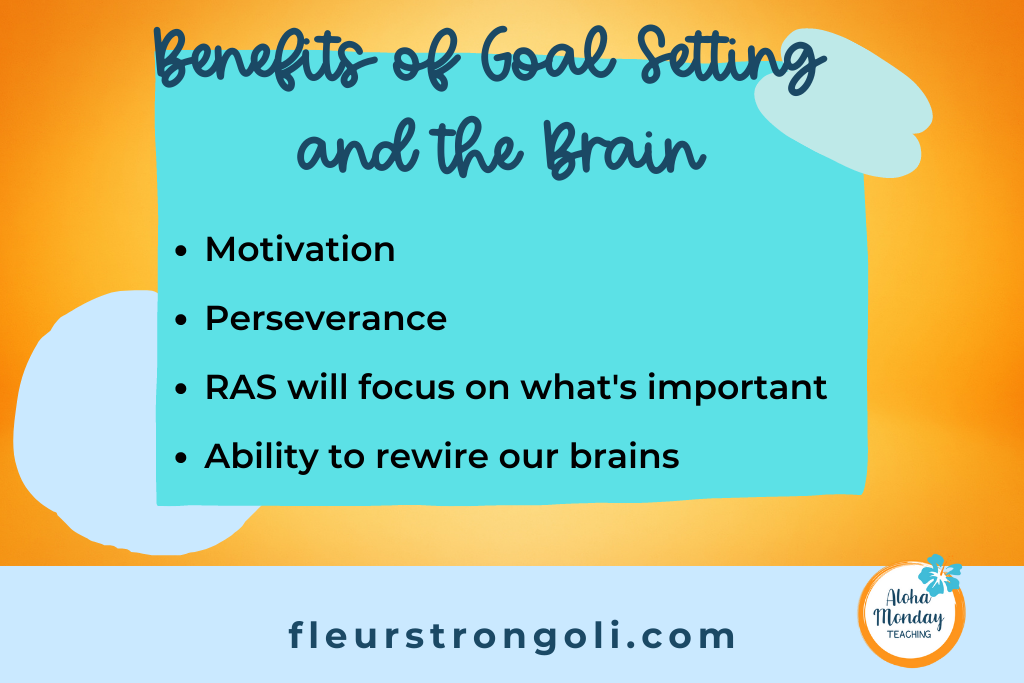
Setting goals for school and in personal lives
It’s important for students to set goals for school and in their personal lives, just like it is for us to set professional and personal goals. In fact, if you want to create new habits for yourself, I encourage you to check out this blog post all about building positive personal habits as a teacher.
Academic goals that students typically set are:
-earn an A in all of their classes
-study more
-get better at Math, Reading, Science
-to bring my grades up
Personal goals that students may set include:
-improving at a sport
-making the team
-learning to play an instrument
-being nice to a sibling
-helping more at home
The main thing is that students must be able to choose their own goals. We just have to guide them on how to set them, monitor them, adjust when needed, and ultimately achieve them.
How to start setting goals
I am going to share two ways that I’ve taught students to set goals. I have also used both personally. But just to disclose, I really, really prefer to set a WIG or Wildly Important Goal. That comes from the Seven Habits of Highly Effective People.
In both examples, we will say a student wants to earn an A in all of their classes.
SMART goals
SMART stands for Specific, Measurable, Achievable, Realistic, and Timely.
Goal: I want to earn A’s in all of my classes.
S– is the goal specific? Yes. The student knows he/she wants to earn an A in all classes.
M– is the goal measurable? Yes, the measurement is an A.
A– is it achievable? Possibly. If this student is already earning As and Bs, it would feel more achievable than a student who is failing all classes. But, regardless, with hard work an A is achievable in all classes by any student.
R– is it realistic? Yes, it is a realistic goal. .
T– is it timely? Not yet. This student needs to add an end date to make it timely.
Revised goal: I will earn As in all of my classes by the end of the semester.

WIGs
In this goal setting example, I will only include the goal writing part. There is more when it comes to monitoring the goal and having an accountability partner.
WIG stands for Wildly Important Goal. There are three parts to the written goal that need to be present. The formula is “From X to Y by when”. You can learn more at the Leader in Me website.
X means where you are now in your goal.
Y is the end goal.
When is the deadline to reach your goal.
“I want to earn As in all of my classes” shows us the “Y”. It tells us the end goal. We need to add where the students is now. Let’s say the student has a B in all of his/her classes. They could rewrite it like this:
“I will go from Bs to As in all of my classes.”
Now we have the X and Y. We just have to add the “when”.
“I will go from Bs to As in all of my classes by the end of the semester.”
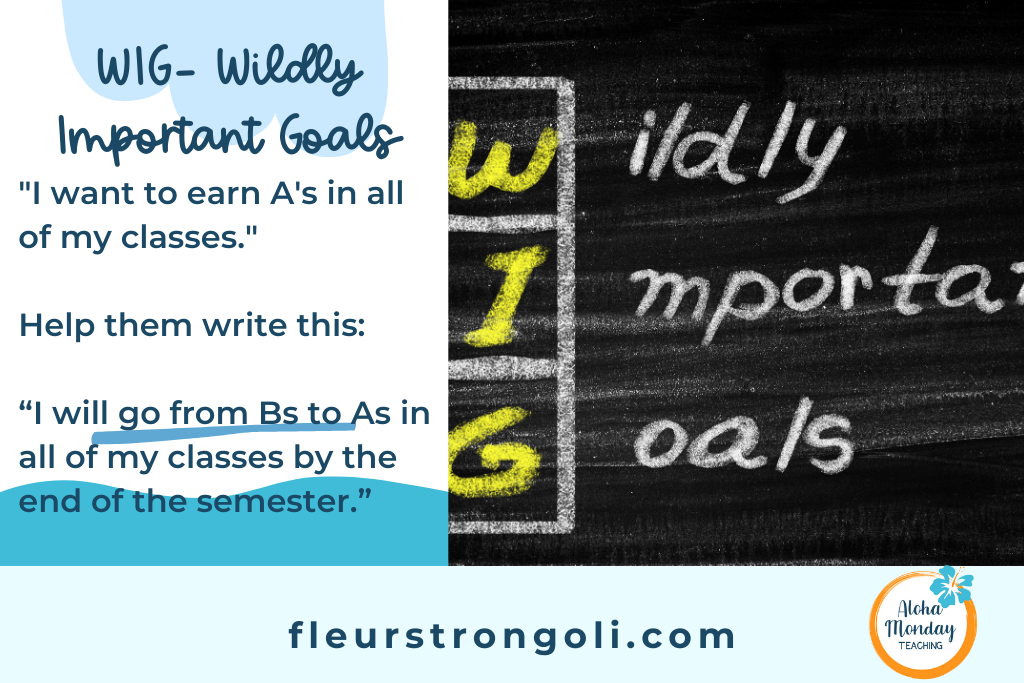
Monitoring Goals
It is so important to teach students how to monitor their goals. You could do weekly check-ins with your students. In Leader in Me, students make a “scoreboard” and graph or show a visual representation of their goals. Students should be able to quickly see if they are on track to reach goals. Seeing your goals on a graph or scoreboard allows you to make adjustments if necessary.
Setting Goals in Science Class Example
Each quarter, we have students set a goal in Science class. It typically involves grades, and we graph their quiz and test scores. We also write one or two action steps.
On the graph, we draw a line across to show the class average goal. If the student chooses a specific percentage goal, then we have the student draw that line across the graph. This shows them the benchmark goals.
Then we have the students graph each quiz or test. This makes it easy for them to see if they are on track to reaching their Science goal.
Wrap Up
I really enjoy goal setting and talking about it. We talked about why setting goals is important, the benefits of it, and what happens in the brain. I also went over two types of goals you can teach your students to write- SMART goals and WIGs.
Your Turn
Do you set goals with your students? I’d love to hear your story! Reply and let me know!


